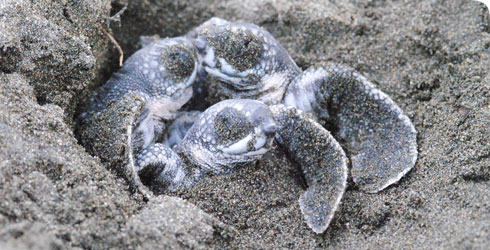Conservation
Estimating Dermochelys coriacea population sizes and trends is difficult due to their enormous range and pelagic existence, although data from nesting beaches shows a dramatic decline in the Pacific leatherback population.
The east Pacific population is thought to have declined from 4,638 adult females in 1995 to 1,690 just 5 years later, and the trend is similar for the rest of the Pacific leatherback sub-populations.
Although the Atlantic population seems healthier, with numbers of nesting females actually increasing on some beaches, yearly fluctuations make it hard to assess the overall trend. Legislation and its implementation vary drastically between the countries in which females nest, and the harvesting of eggs and adults is common in many countries.
There are, however, a great number of conservation projects and protected reserves worldwide:
- females are monitored by tagging
- reproductive data is straight-forward to acquire and is collected at many nesting sites
- on beaches where poaching is commonplace, eggs are sometimes removed from their original nests and re-buried in hatcheries where they are protected until they are ready to be released into the sea
